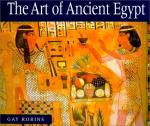|
This section contains 1,579 words (approx. 6 pages at 300 words per page) |

|
Protection.
Archaeology has provided many examples of Egyptian jewelry for study. Upper-class Egyptian men and women wore jewelry and considered it essential for being fully dressed. Jewelry served to protect people, according to Egyptian thought. The areas most in need of protection were the head, neck, arms, wrists, fingers, waist, and ankles. Thus hairpins, necklaces, armlets, bracelets, finger-rings, decorative girdles, and ankle bracelets all became popular as a means of protecting vulnerable areas. Unlike modern jewelers, who normally use casting to shape their products, Egyptian jewelers more often hammered sheet metal, then cut, shaped, crimped, and soldered it to make settings for stones. Jewelers also hand-wrought wires for chains. Often tomb jewelry was inexpensively gilded wood or steatite (soapstone) rather than solid gold. Only the wealthiest Egyptians could afford to bury solid-gold objects. People who could not afford jewelry made from precious metals and...
|
This section contains 1,579 words (approx. 6 pages at 300 words per page) |

|




